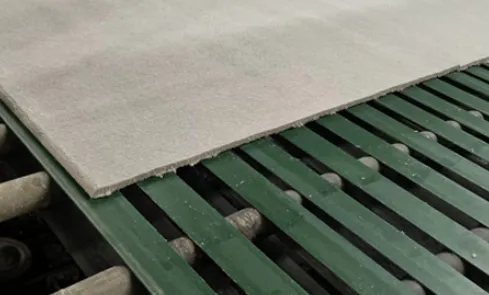- Afrikaans
- Albanian
- Amharic
- Arabic
- Armenian
- Azerbaijani
- Basque
- Belarusian
- Bengali
- Bosnian
- Bulgarian
- Catalan
- Cebuano
- Corsican
- Croatian
- Czech
- Danish
- Dutch
- English
- Esperanto
- Estonian
- French
- German
- Greek
- Hindi
- Indonesian
- irish
- Italian
- Japanese
- Korean
- Lao
- Malay
- Myanmar
- Norwegian
- Norwegian
- Polish
- Portuguese
- Romanian
- Russian
- Serbian
- Spanish
- Swedish
- Thai
- Turkish
- Ukrainian
- Uzbek
- Vietnamese
12月 . 15, 2024 01:02 Back to list
Understanding the Concept and Benefits of Grid Ceilings in Modern Architecture
Understanding Grid Ceilings A Comprehensive Guide
A grid ceiling, also known as a suspended ceiling or drop ceiling, is a versatile and widely used architectural feature in both residential and commercial buildings. This ceiling type consists of a framework of metal grids that support ceiling tiles or panels, creating a smooth and even surface. While grid ceilings may seem purely functional, they offer a range of aesthetic and practical benefits that make them a popular choice among architects, designers, and homeowners alike.
The Structure of Grid Ceilings
Grid ceilings are typically composed of a series of metal channels or grids that are suspended from the original ceiling using wires. These grids form a pattern that allows for the insertion of lightweight panels or tiles made from various materials, such as mineral fiber, metal, or acoustic fabric. The most common grid arrangement is a 2x2 foot or 2x4 foot layout, although other sizes and shapes can also be used depending on the design preferences and requirements of the space.
The suspended nature of grid ceilings provides a convenient space for running electrical wiring, plumbing, and HVAC ducts, which can be hidden from plain sight. This feature is particularly advantageous in commercial spaces where complex systems are often required. Additionally, grid ceilings can easily accommodate changes or upgrades to these systems without significant renovation work.
Aesthetic Advantages
Beyond their functional attributes, grid ceilings also offer significant aesthetic advantages. They can be designed to complement a variety of interior styles, from modern minimalist to classic elegance. The selection of tiles available in various colors, finishes, and textures allows for creative flexibility, enabling designers to create specific atmospheres or themes.
Furthermore, grid ceilings can enhance the acoustics of a room. Acoustic tiles are available that help absorb sound and minimize noise, making them an ideal choice for spaces such as offices, schools, and recording studios. This acoustic benefit contributes to a more comfortable and productive environment, particularly in open office layouts where noise can be a distraction.
what is a grid ceiling

Energy Efficiency and Maintenance
A practical consideration for many building owners is energy efficiency. Grid ceilings can contribute to better insulation and temperature control within a space. By incorporating materials that reflect or absorb heat, these ceilings can help reduce heating and cooling costs. Furthermore, the space between the grid and the original ceiling allows for additional insulation, enhancing the overall energy efficiency of the building.
Maintenance is another area where grid ceilings shine. The easy accessibility of suspended tiles means that if a tile becomes damaged or stained, it can be replaced quickly and without the need for extensive repair work. This ease of maintenance can be particularly important for businesses seeking to minimize downtime and maintain a professional appearance.
Installation and Cost
Installing a grid ceiling can be a straightforward process, making it appealing for both DIY enthusiasts and professional contractors. The materials required are generally affordable, and the installation can often be completed in a relatively short timeframe. As a result, grid ceilings can provide a budget-friendly alternative to more permanent ceiling structures, allowing more flexibility in design choices and future renovations.
Conclusion
In summary, grid ceilings represent a perfect blend of functionality, aesthetics, and practicality. Their ability to facilitate complex systems, enhance acoustics, and contribute to energy efficiency makes them an appealing option for various spaces. Furthermore, the ease of installation and maintenance ensures that they remain a popular choice for both new constructions and remodels. Whether you are redesigning a modest home or a large commercial space, considering a grid ceiling can add value and beauty while meeting your practical needs. With their myriad advantages, grid ceilings continue to be an enduring solution in modern architectural design.
-
Transform Interiors with PVC Gypsum Ceiling: A Stylish, Durable, and Moisture-Resistant SolutionNewsMay.19,2025
-
The Smart Interior Upgrade: Discover the Durability and Versatility of Gypsum Ceiling Access Panel SolutionsNewsMay.19,2025
-
The Smart Choice for Interior Design: Discover the Value of PVC Gypsum Ceiling SolutionsNewsMay.19,2025
-
Mineral Fiber Ceiling Tiles: The Smart Blend of Performance and AestheticsNewsMay.19,2025
-
Mineral Fiber Ceiling Tiles: The Superior Choice Over Gypsum for Sound and Fire SafetyNewsMay.19,2025
-
Mineral Fiber Ceiling Tiles: Eco-Friendly Strength and Style for Every CeilingNewsMay.19,2025







